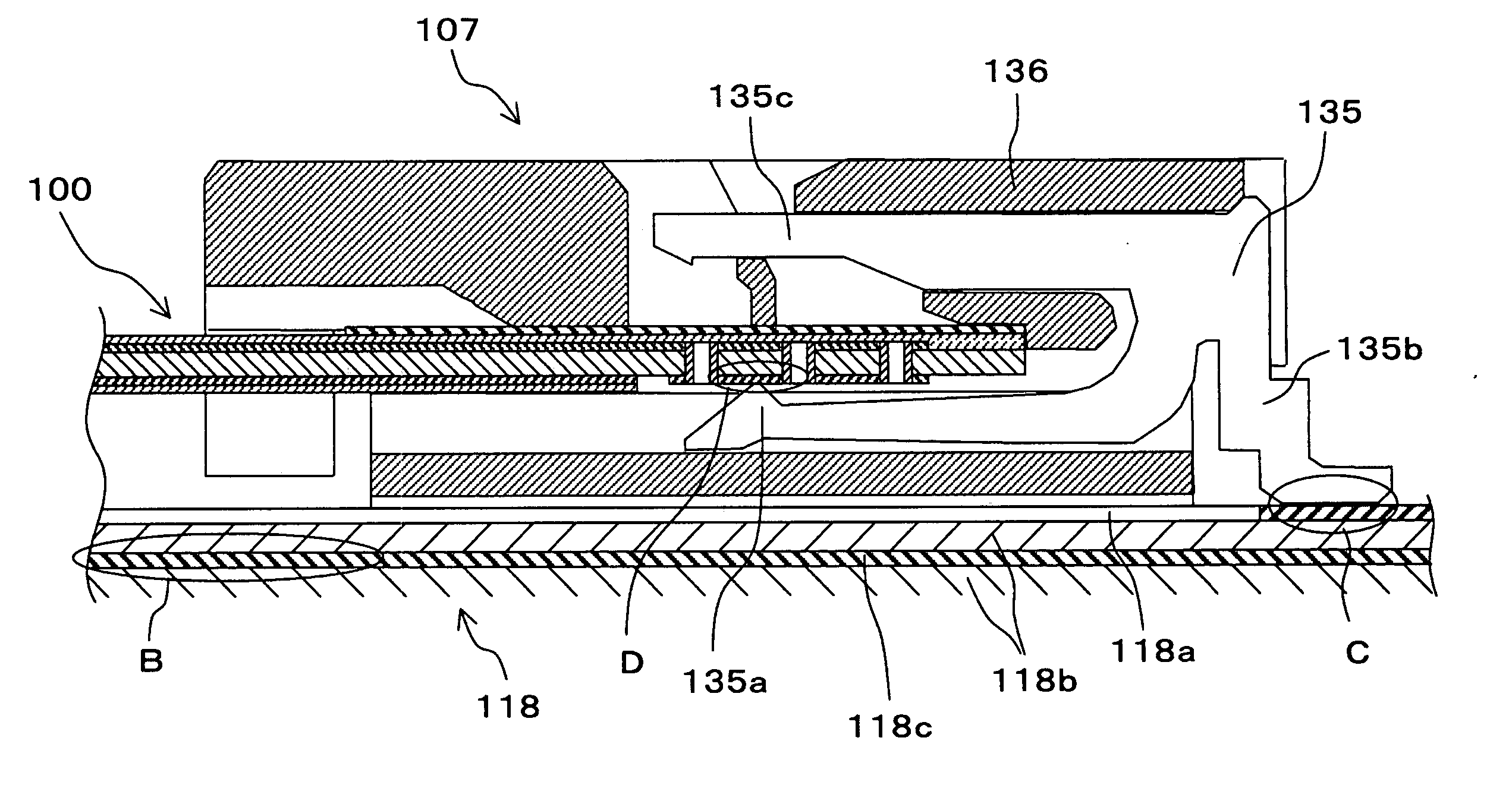Flexible printed circuit board
a printed circuit board and flexible technology, applied in the direction of printed element electric connection formation, high-frequency circuit adaptation, coupling device connection, etc., can solve the problems of difficult to improve the transmission characteristics of high-frequency signals, deterioration of high-frequency signal transmission characteristics, etc., to achieve the effect of deterioration of transmission characteristics and degrading of electrical impedance characteristics of signal lines 9
- Summary
- Abstract
- Description
- Claims
- Application Information
AI Technical Summary
Benefits of technology
Problems solved by technology
Method used
Image
Examples
Embodiment Construction
[0050] The following will describe preferred embodiments of a flexible printed circuit board, an optical transmitter-receiver module, and an optical transmitter-receiver in accordance with the present invention. First, a first embodiment of the flexible printed circuit board of the present invention will be described.
[0051] (Configuration of the flexible printed circuit board according to the first embodiment of the present embodiment)
[0052]FIGS. 7-11 are explanatory views of a configuration of a flexible printed circuit board 100 according to a first embodiment of the present invention. FIG. 7 is a plan view of the flexible printed circuit board 100 for showing an outline thereof, a part of which configuration is indicated, in a transparent condition, by a broken line for purposes of clarification. FIG. 8 is a cross-sectional view of the flexible printed circuit board 100 according to the first embodiment of the present invention taken along lines A-A of FIG. 7. FIG. 9 is a plan ...
PUM
| Property | Measurement | Unit |
|---|---|---|
| diameters | aaaaa | aaaaa |
| width | aaaaa | aaaaa |
| width | aaaaa | aaaaa |
Abstract
Description
Claims
Application Information
 Login to View More
Login to View More - R&D
- Intellectual Property
- Life Sciences
- Materials
- Tech Scout
- Unparalleled Data Quality
- Higher Quality Content
- 60% Fewer Hallucinations
Browse by: Latest US Patents, China's latest patents, Technical Efficacy Thesaurus, Application Domain, Technology Topic, Popular Technical Reports.
© 2025 PatSnap. All rights reserved.Legal|Privacy policy|Modern Slavery Act Transparency Statement|Sitemap|About US| Contact US: help@patsnap.com



